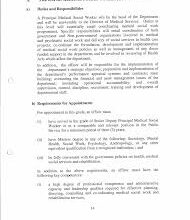Everything You should know about Dental Floss and Here’s What Happens If You Don’t Floss

What Is Flossing or Dental Floss?
I am guessing you already know that you should brush your teeth at least twice per day. But did you know that, in addition to brushing your teeth, you should also be flossing twice daily too?
Dental floss (or simply floss) is a cord of thin filaments used to remove food and dental plaque from between teeth in areas a toothbrush is unable to reach.
Flossing is an important oral hygiene habit. It cleans and dislodges food stuck between your teeth, which reduces the number of bacteria and plaque in your mouth. Plaque is a sticky film that builds up on teeth and contributes to cavities and gum disease.
The use of floss is commonly recommended in order to prevent gingivitis and the build-up of plaque. The American Dental Association claims that up to 80% of the plaque can be eliminated with this method, and flossing may confer a particular benefit in individuals with orthodontic devices. However, empirical scientific evidence demonstrating the clinical benefit of flossing as an adjunct to routine toothbrushing alone remains limited.
Tooth flossing is specifically recommended to such individuals who have a tight interdental (space between two adjoining teeth) spacing especially because there is an increased risk of entrapment of food particles which does not easily go away by rinsing or tooth brushing.
Why Is Tooth Flossing Recommended?
The oral cavity provides an ideal environment for housing various bacteria. As soon as the food is consumed these bacteria combine with food particles resulting in the formation of plaque. Plaque if not removed, can slowly accumulate in between the tooth spaces in the form of hard deposits referred to as tartar.
Both plaque and tartar result in dental concerns like inflammation of gums resulting in gum ailments like gingivitis and periodontitis. Plaque entrapped between teeth is a host of various dental issues like:
• Tooth decay known as tooth caries leads to decay of the tooth structure
• Gingivitis referred to as swelling of the gums thereby causing bleeding from the gums
• Periodontitis which causes the damage of structures supporting teeth such as ligaments and bone
• An overall decline in oral health which can manifest in various symptoms like pus formation, tenderness, and inability to masticate food
• Deranged dental health not only contributes to the above-mentioned oral conditions but can also lead to severe medical conditions including cardiac disease and even preterm labor.
What Type Of Dental Floss Should I Use?
There are two types of floss from which to choose:
• Nylon (or multifilament) floss
• PTFE (monofilament) floss
Nylon floss is available waxed and unwaxed and in a variety of flavors. Because this type of floss is composed of many strands of nylon, it may sometimes tear or shred, especially between teeth with tight contact points. While more expensive, single filament (PTFE) floss slides easily between teeth, even those with tight spaces between teeth, and is virtually shred-resistant. When used properly, both types of floss are excellent at removing plaque and debris.
If it’s hard to use regular floss, you can try floss picks, water flossing, or a variety of alternative flossing tools. No matter how you do it, cleaning between your teeth will help keep your smile sparkling.
What is the right technique for flossing?
Now that you are aware that flossing is good for your dental hygiene, you might be wondering why — or how to do it correctly. Well, proper flossing removes plaque and food particles in places where a toothbrush can’t easily reach — under the gumline and between your teeth. Because plaque build-up can lead to tooth decay and gum disease, daily flossing is highly recommended.
According to the American Dental Association, tooth flossing is recommended at least once a day. Below is a series of sequential steps which one can follow:
• Tear off at least 18 inches of floss and wrap it around one of the middle fingers. Wrap the rest of the portion of floss around the finger of the opposite hand. Floss wrapped on the opposite finger will retain the food particles removed during the process
• Tightly hold the floss between thumbs and your fingers and then gently direct the floss towards the teeth using a gentle rubbing motion but make sure not to push the floss directly into the gums.
• Once the floss is at the gum line turn the floss around the neck of the tooth to make a C-shaped curve. Move the floss slowly into the area between the gums and the teeth
• Floss should be retained at a position firmly against the tooth and then smoothly start rubbing the floss gently against the tooth and start sliding the floss away from the gum in an upside and downward motion.
• Follow the same steps for each tooth not leaving aside the backside of even the last tooth of both upper and lower arches.
• Discard the floss after completing the above procedures. Never reuse the floss once it is used as reusing the same floss may reintroduce the bacteria in the gums
Is It Better To Floss Before Or After Brushing Your Teeth?
In short, you should definitely be flossing *before* you brush your teeth, says Leslie B. Wardell, DDS, a dentist with his practice based in Illinois. “The bacteria in your mouth grows quickly at night in the dark, warm atmosphere of your mouth,” Dr. Wardell explains. “You will more than double the number of bacteria in your mouth when you sleep. For example, if you go to bed with two billion bacteria in your mouth, you will wake up with four billion bacteria.”
Basically, if you weren’t doing this already, you should be reaching for your string floss first thing in the morning. You’ve gotta get rid of that acidic bacteria, ASAP, and you have a better chance of doing so when first flossing away plaque and grime, then brushing for a spotless finish.
Should I Brush Or Floss First?
It doesn’t matter if you brush or floss first, as long as you do a thorough job cleaning all of your teeth and practice good oral hygiene habits every day.
A 2018 study suggested that it’s better to floss first and then brush. The study indicated that flossing first loosened bacteria and debris from between teeth, and brushing afterward cleaned these particles away.
Brushing second also increased fluoride concentration in the interdental plaque, which could reduce the risk of tooth decay by strengthening tooth enamel.
However, the ADA maintains that either flossing first or brushing first is acceptable, depending on what you prefer. I prefer to Floss First, then Brush After. Do you prefer to brush or floss first? Tell us using the comment section below.
Sources:
- https://healthline.com/health/dental-and-oral-health/floss-before-or-after-brushing
- https://www.news-medical.net/health/How-to-Floss-Your-Teeth-Properly.aspx







